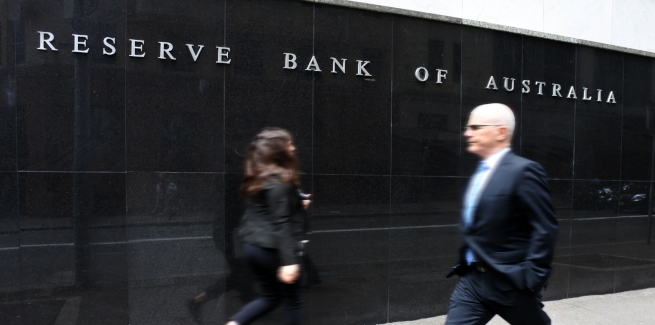The Reserve Bank of Australia (RBA) has held the official cash rate at the current record low of 0.10 per cent in line with its stance that it would not raise rates until inflation targets are met and wage growth picks up.
The RBA previously slashed the official cash rate to the record low of 0.10 per cent in November 2020, and simultaneously moved to broad quantitative easing.
The RBA has repeatedly stated that its board has remained committed to maintaining more flexible monetary policies to support a return to full employment in Australia and inflation consistent with the 2 to 3 per cent target.
It had said that it would not increase the cash rate until actual inflation is sustainably within the target range, adding that the central bank’s central scenario for the economy is that this condition would not be met before 2024.
Nevertheless, speculation has been mounting that a faster-than-expected economic recovery from the COVID-19 crisis could spur the RBA to hike rates before 2024.
However, the latest outbreak of the COVID-19 delta variant and the ensuing lockdowns in Australia (including snap lockdowns across several states and the Northern Territory, and the extended lockdown in NSW) have curbed the chances of a rate rise occurring before RBA’s forecasts.
In his statement on the monetary policy decision for August, RBA governor Dr Philip Lowe said that a pick-up in both wages growth and underlying inflation is expected but flagged that this pick-up is likely to be only gradual.
“In the bank’s central scenario, it takes some years for the stronger economy to feed through into wage and price increases that are consistent with the inflation target,” Dr Lowe said.
In underlying terms, inflation is expected to be 1.75 per cent over 2022, and 2.25 per cent over 2023, the board has predicted.
“One source of uncertainty is the behaviour of wages and prices at the low levels of forecast unemployment, including because it is some decades since Australia has sustained an unemployment rate around 4 per cent,” Dr Lowe said.
The board reiterated that it would not increase the cash rate until actual inflation is sustainably within the 2 to 3 per cent target range, and does not expect these conditions to be met before 2024. The labour market would need to be tight enough for wages to grow at a significantly higher rate than it is currently.
The board has also decided to continue tapering its government bond-buying program as previously flagged despite the latest lockdown causing disruptions to the economy. It will purchase securities at the rate of $5 billion a week until early September and then $4 billion a week until at least mid-November.
Dr Lowe said the central bank is continuing to monitor trends in housing borrowing “carefully” as housing markets have continued to strengthen and prices have continued to rise in all major markets in a low interest rate environment.
“It is important that lending standards are maintained,” Dr Lowe said.
Housing credit growth has picked up, with demand driven by owner-occupiers (including first home buyers), while borrowing by investors has also picked up, the board said.
ANZ head of Australian economics David Plank commented that the RBA "surprised" the major bank and most market commentators by leaving its July decision to reduce bond purchases in September unchanged.
He said: "We had thought a taper delay was likely, to demonstrate that the RBA is prepared to use the flexibility provided by its new approach to quantitative easing."
Mr Plank said the fact that the economy is benefiting from significant additional fiscal policy support could have contributed to leaving its decision to taper its bond purchase program unchanged.
"As a result, the RBA’s expectation of a strong rebound from lockdowns and the upgrade to its forecasts, with inflation expected to be “2.25 percent over 2023”, won out over the downside risks posed by the current surge in COVID-19 cases," Mr Plank said.
Triggers for credit tightening
Noting the RBA’s decision to leave its monetary policy unchanged despite the disruption and the heightened level of uncertainty caused by the recent COVID-19 outbreaks, CoreLogic Asia-Pacific research director Tim Lawless said the RBA is expecting the disruption to the economy and labour markets to be temporary (especially given experiences where the economy has bounced back quickly after restrictions were lifted).
Additionally, with Dr Lowe stating that the RBA is monitoring housing borrowing, Mr Lawless said that a significant rise in low-deposit home lending or loans with high debt-to-income ratios could trigger a new round of credit tightening aimed at stemming household debt.
“To date, the messaging from regulators and policymakers has been that lending standards are being maintained, but if the quality of home lending does reduce, we could see it become harder to secure a home loan, especially for borrowers with small deposits or high debt levels relative to their income,” he said.
“From previous instances for credit tightening, we know that this would probably have a more pronounced effect in dampening housing market conditions.”
CreditorWatch chief economist Harley Dale said the RBA’s decision to hold the cash rate at its record low of 0.10 per cent has demonstrated that it is prepared to maintain stimulus support for the economy, but noted that they have “effectively done all they can”.
He said the dynamic of the economy has changed significantly in the last month as several parts of the country have plunged in lockdown, adding that “the ball is now in the court of the federal government”.
“NSW businesses need ongoing financial assistance,” he said.
“After coming out of 2020 in a stable position, letting the state falter now risks demand, business investment and jobs for the entire Australian economy.”
[Related: RBA delivers new financial year rate decision]
 ;
;
